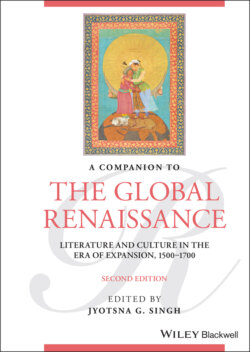Читать книгу A Companion to the Global Renaissance - Группа авторов - Страница 33
3 Islam and Tamburlaine’s World-Picture
ОглавлениеJohn Michael Archer
The two parts of Christopher Marlowe’s Tamburlaine the Great form an epic of global, if not cosmic, scale. Tamburlaine’s conquering journey from central Asia through Persia to Turkey implies in its ambition and the rhetoric that attends it an even grander circuit. Marlowe’s language ranges from Northern Europe to the Antarctic and West to the Americas and from the heavens to the elements of the human body and their dissolution in hellish images of combustion and darkness. Yet, as drama, the plays must also confront the impossibility of representing such an epic itinerary on stage within the largely visual medium of theater.1 In a sense, they already embody the paradox of what Martin Heidegger named the “Age of the World Picture,” a modernity that is at once visual and nonvisual because it features not “a picture of the world but the world conceived and grasped as picture” (Heidegger, 129). A world-picture is an idea or conceptual framing of existence as an image in which the subject has become immersed. The paper that follows brings together two different approaches to Marlowe’s world-picture and its limits. The first section reviews the overtly visual influence of contemporary projects to map the world on his epic drama; the second questions the extent to which Islam was represented within the human geography of the world pictured on the early modern English stage. As I shall show, Marlowe, surprisingly, cites Muslim strictures on the image while drawing on the Qur’an itself for his cosmography, yet his view of Islam remains, perhaps inevitably, a distorted one. Islam’s ultimate absence from the life-world of Tamburlaine the Great suggests that religious belief itself remains recalcitrant before the modern world-picture and its array of easily marked subjects or identities.
